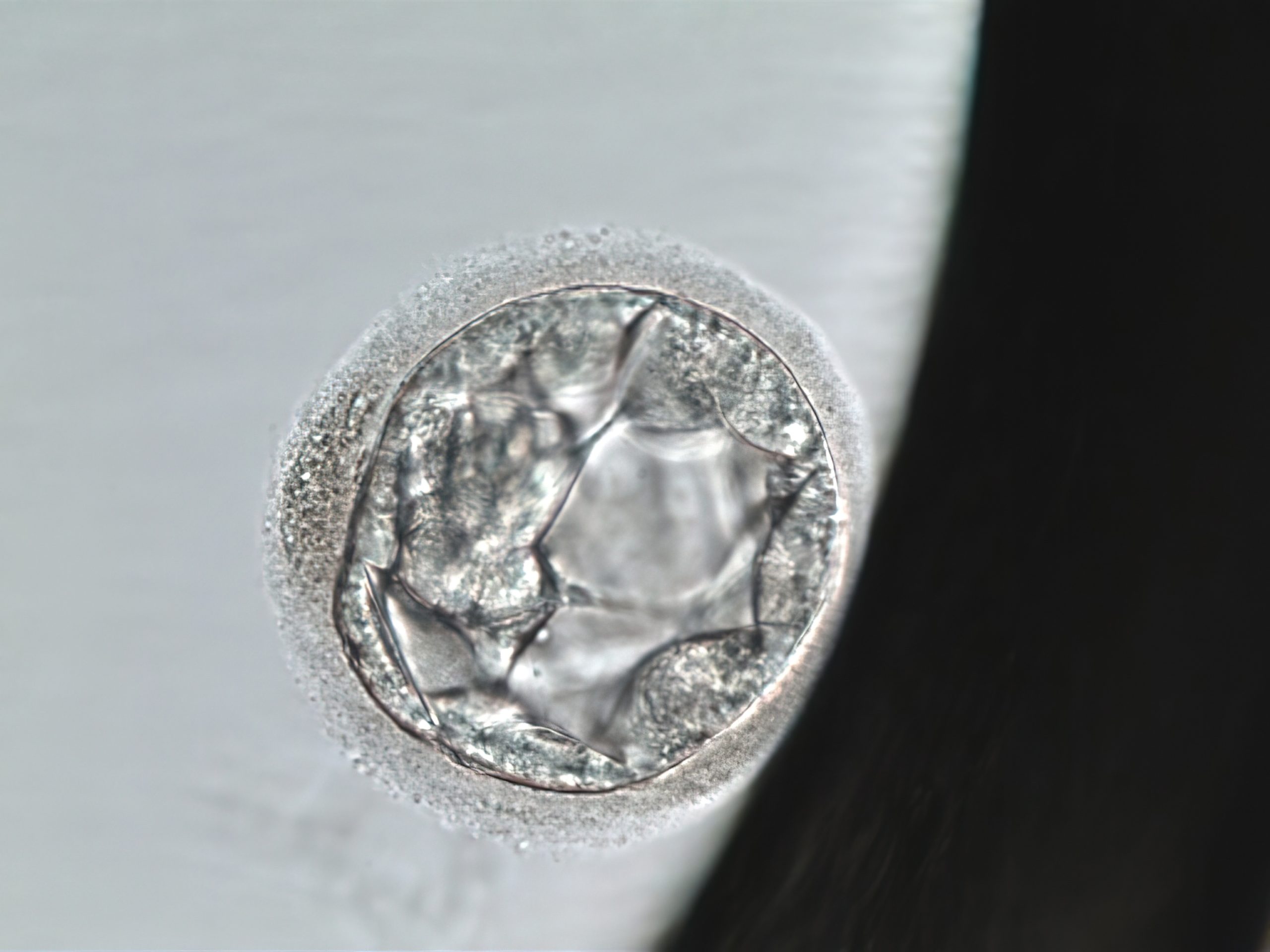Understanding Embryo Grading with IVF

Embryo grading is a process in which embryologists evaluate the development of embryos created using In Vitro Fertilization (IVF) and assign them with a grade prior to the embryo transfer or cryopreservation.
This grading process occurs between Days 2 to 7 post egg retrieval and fertilization, allowing specialists to determine which embryos have the best chance of implantation and pregnancy. Good embryology programs require embryologists to complete a comprehensive training program on embryo grading and participate in a proficiency testing program several times a year to ensure they continue to accurately assess embryo quality.
It is important to note that while embryo grades do generally correlate with success rates, embryo grading is subjective based on a single embryologist’s interpretation of an embryo’s health at a single moment in time. The temporary state of the embryo is only one piece of the IVF puzzle.
Alongside the grading results, factors such as the patient’s age, fertility history, and overall health are taken into consideration to maximize the chances of a successful pregnancy while reducing the risk of multiple pregnancies.
The grading system helps guide the process, but it is always used in combination with the broader context of the patient’s unique fertility journey. Here is a breakdown of how embryo development is assessed during this critical period and of how embryo grades can impact success rates.
How Are Embryos Graded?
Embryos are graded on different factors depending on the stage of development. These factors include how many cells the embryo has and whether these cells are of a uniform size and shape (symmetry). The embryos are also checked for any fragments or debris within the embryo, which can be an indicator of poor development.
When the embryo reaches the blastocyst stage (about five days after fertilization), its inner cell mass (ICM), which will become the baby, and the outer layer called the trophectoderm, which becomes the placenta, are also evaluated.
A high-quality embryo has ideal cell numbers, minimal fragmentation, and well-formed structures for its stage in development.
Here’s a breakdown of how embryos are graded at the cleavage and blastocyst stages.
Day 2-4 Embryo Grading: Cleavage Stage
During Days 2 to 4, embryos are evaluated based on the number of cells, symmetry, and the degree of fragmentation. The number of blastomeres (cells in the embryo) is counted, and embryos are graded on a scale from 1 to 4:
- Grade 4 (Good): Symmetrical and equal-sized blastomeres with no fragmentation; number of cells are appropriate for the embryo’s stage.
- Grade 3 (Good): Regular blastomeres with minor fragmentation or slight irregularities.
- Grade 2 (Fair): Irregular blastomeres with more significant fragmentation.
- Grade 1 (Poor): Few recognizable blastomeres with severe fragmentation (>25%) or delayed development over 24 hours.
Embryos at this stage are carefully monitored to predict outcomes for extended culture or transfer. While lower-graded embryos may still be viable, higher grades often indicate a stronger chance of continued growth and successful implantation .
Day 5-7 Embryo Grading: Blastocyst Stage
By Day 5, embryos reach the blastocyst stage, a crucial point for evaluation. Blastocyst grading involves assessing three main factors: the degree of expansion, the inner cell mass (ICM), and the trophectoderm (outer layer of cells). The grading system for blastocysts includes:
- Expansion: Ranges from 1 (early blastocyst) to 6 (hatched blastocyst). As the blastocoel (fluid-filled cavity) grows, the blastocyst becomes more advanced, with stages such as expanded and hatching blastocysts.
- Inner Cell Mass (ICM): Grade A (many tightly packed cells), B (loosely grouped cells), or C (very few cells spread out).
- Trophectoderm: Grade A (many cohesive cells forming a strong epithelium cobblestone appearance), B (fewer cells, looser structure), or C (very few cells spread out).
Blastocyst grading helps determine which embryos are most likely to result in a successful pregnancy based on their appearance. Embryos with an “A” or “B” grading for both the ICM and trophectoderm are preferred, but “C” graded embryos still have a chance of viability.
Embryo Grades and IVF Success Rates
Though embryo grades are subjective, research has found that higher embryo grades correlate with higher rates of successful births.
For example, a 2018 study of 914 single embryo transfers found the following correlations:
- Excellent: 65% pregnancy rate
- Good: 59.3% pregnancy rate
- Average: 50.3% pregnancy rate
- Poor: 33.3% pregnancy rate
A 2020 study examining the relationship between embryo grading and IVF live birth rates for 570 Fresh Transfers (FT), and 885 Frozen Embryo Transfers (FET) found:
- AA graded embryos resulted in a 41.4% live birth rate
- BB graded embryos resulted in 31.1% LBR
- CC embryos resulted in 13.3% LBR
Embryo Grading: The Takeaway
Embryo grading provides valuable insight into embryo viability, helping couples and fertility specialists make informed decisions regarding embryo transfer and cryopreservation.
While higher-graded embryos offer a better chance of success, it’s important to remember that embryos graded lower may still lead to successful pregnancies. Factors such as genetic composition, maternal health, and timing of the embryo assessment all play a role in the outcome.
At CNY Fertility, we give every embryo every possible chance to develop for future use. We do not rule out embryos based on appearance alone.

